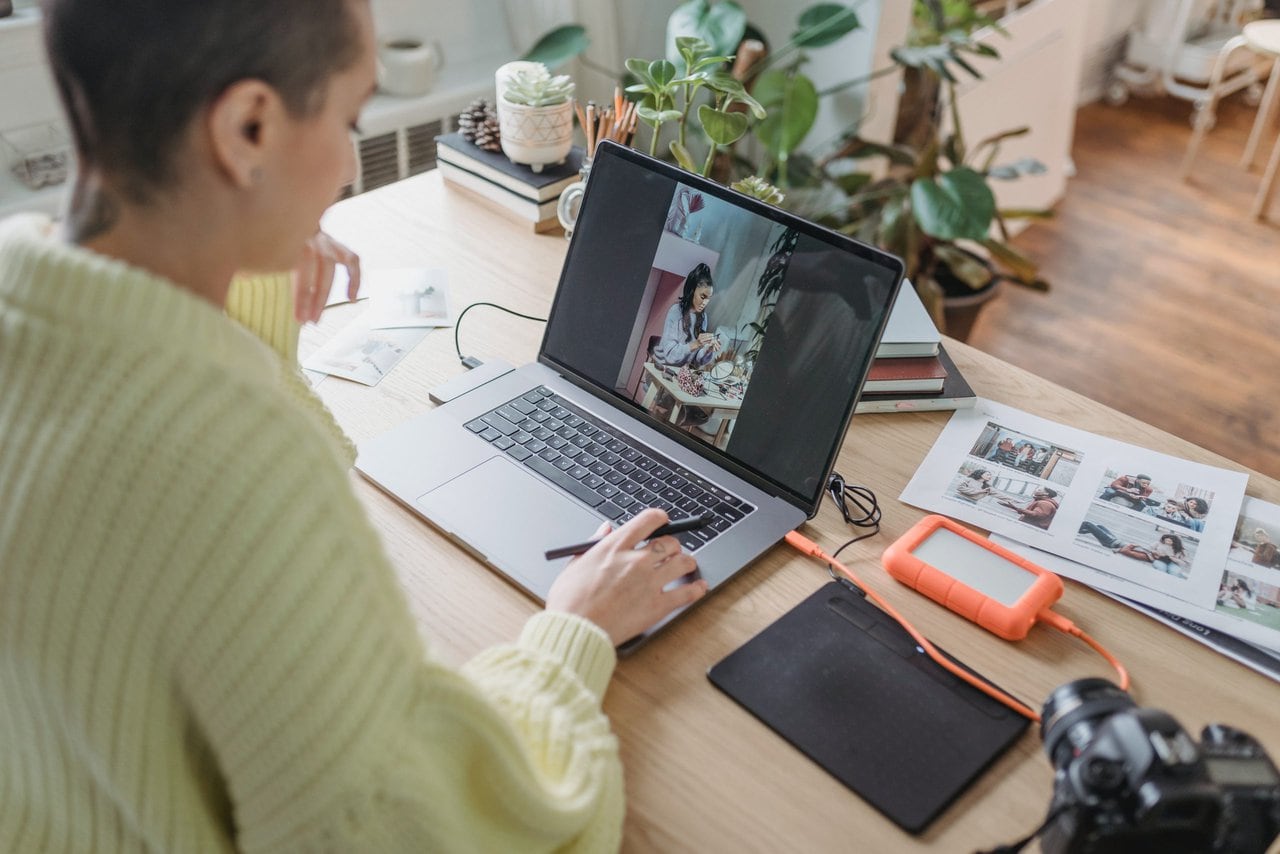Are you tired of scrolling through social media and seeing all those eye-catching GIFs that seem to captivate everyone’s attention? Well, now you can make your own! With just a few simple steps in Photoshop, you’ll be able to create stunning animated images that will have your friends and followers begging for your secrets. Whether you want to add some pizzazz to your blog posts or impress your colleagues with a unique presentation, learning how to make a GIF in Photoshop is a skill that will elevate your creativity to new heights. Get ready to unleash the artist within as we walk you through the process in five easy steps.
What is a GIF and why use Photoshop?
A GIF, short for Graphics Interchange Format, is a popular image format that supports both static and animated images. Its widespread use can be credited to its ability to display short looping animations that convey a message or capture attention. What sets GIFs apart from other image formats is their ability to include movement, making them perfect for creating eye-catching content.
So why would you use Photoshop to create a GIF? Well, Photoshop is not only a powerful tool for editing photos but also has extensive capabilities when it comes to creating animations. With Photoshop’s robust features, you can easily manipulate images layer by layer and transform them into dynamic GIFs. From simple animations like bouncing logos to more complex storytelling sequences, Photoshop offers endless possibilities for crafting visually captivating and engaging content.
Using Photoshop also gives you control over every aspect of your GIF creation process. You can pick the perfect frame rate and duration of each frame to ensure smooth animation. Additionally, with advanced features such as blending modes and transitions, you have the freedom to experiment with different effects and styles. This level of customization allows you to tailor your GIFs precisely according to your vision and desired impact.
In conclusion, understanding what a GIF is opens up exciting opportunities for creating compelling visual content. Harnessing the power of Photoshop takes those opportunities even further by providing tools that allow you full creative control over your animations. Whether you are looking to add some flair to your social media posts or want an innovative way to present information on your website, mastering how to make a GIF.

Step 1: Open Photoshop and create a new project
Open Photoshop and create a new project. This is where the magic begins, as you embark on your journey to create an eye-catching GIF. As Photoshop opens up before you, with its vast array of tools and possibilities, the excitement starts to build. You have a blank canvas waiting to be filled with your creativity.
Creating a new project in Photoshop gives you complete control over the size, resolution, and background color of your GIF. Whether it’s for social media or a website banner, selecting the right dimensions is essential. Remember that different platforms may have specific requirements for GIFs, so make sure to do some research beforehand.
Once you’ve set up your project, don’t hesitate to experiment with various options at your disposal. Dive into the world of layers, choose the perfect color palette, and play around with brushes and filters. Remember that every step along the way contributes to making a truly mesmerizing GIF that will captivate viewers’ attention.
Step 2: Import your images or video
Once you have opened Photoshop and created a new document, it’s time to import your images or videos. This step is crucial because it determines the content that will be used to create your GIF. Whether you are working with a series of images or a video clip, Photoshop allows you to easily import and manipulate them for your desired outcome.
When importing images, be mindful of their resolution and quality. Higher resolution images will result in a more detailed and visually appealing GIF. Additionally, consider the number of frames you want to include in your GIF as this will affect its overall length and file size.
On the other hand, if you are working with a video clip, keep in mind that Photoshop only supports certain video formats such as MP4 or MOV. If needed, convert your video file into an acceptable format before importing it into Photoshop.
Importing media files into Photoshop not only provides you with creative freedom but also enables you to experiment with various effects and adjustments during the creation process. So take some time to gather and organize your desired media assets before diving deeper into making an eye-catching GIF that truly stands out.

Step 3: Arrange the frames in the timeline
Now that you have all your frames ready, it’s time to bring them together and create a smooth animation. Photoshop’s Timeline panel is where the magic happens. Open it by going to Window > Timeline. You will see each individual frame stacked in layers, creating a visual representation of how your GIF will flow.
To arrange the frames, simply click on each layer and drag them into position within the timeline. This allows you to control the timing and order of your frames, influencing the overall look and feel of your animation. Experiment with different arrangements to find the perfect sequence that brings your GIF to life!
Remember, as you rearrange the frames in the timeline, be mindful of their duration. Each frame has its own default timing – changing this can greatly impact how fast or slow your GIF plays back. So take a moment to adjust these timings by right-clicking on each frame’s duration and selecting Set Duration. This way, you’ll ensure that each frame gets its fair share of attention in your mesmerizing animated creation.
With step 3 completed successfully, you are almost at the finish line! The placement and arrangement of frames in Photoshop’s timeline bring coherence and artistic expression to your GIF animation. Each movement comes alive through strategic sequencing – capturing attention while keeping viewers engaged with its mesmerizing looped motion. Stay tuned for our final steps where we unveil additional tips on adding finesse through effects and exports!
Step 4: Customize your GIF with effects
Now that you have your basic GIF ready, it’s time to take it to the next level by adding some captivating effects. Photoshop offers a wide range of tools and filters that can transform your ordinary image into a mesmerizing animation. One popular effect is the Gaussian Blur which creates a dreamy, soft-focus look by blurring specific areas of the image. This effect works particularly well for landscapes or portraits, adding an ethereal quality to your GIF.
Another powerful effect in Photoshop is the Color Overlay. This allows you to change the color tone of your GIF, creating a completely different mood and atmosphere. Whether you want to give your animation a vintage vibe with sepia tones or make it pop with vibrant hues, this feature gives you full control over the visual aesthetic of your creation. Experiment with different color overlays to see what fits best with your desired theme.
Lastly, don’t overlook the power of text in enhancing your GIF. Adding captions or quotes can convey messages and evoke emotions more effectively than visuals alone. With Photoshop’s text tools, you can easily overlay text onto each frame of your animation and play around with fonts, sizes, colors, and styles until you achieve the perfect combination. The addition of text can turn a simple GIF into a powerful storytelling tool or emphasize key moments within the animation.

Step 5: Export and save your finished GIF
Once you have completed all the necessary steps to create your GIF in Photoshop, it’s time to export and save your masterpiece. This final step is crucial because it ensures that your GIF can be viewed and shared by others.
To export your GIF, go to the File menu and select Export or Save for Web. This will open a new window where you can adjust the settings of your GIF. Here, you can choose the file format (GIF), set the colors, adjust dithering options if needed, and specify the size of your GIF.
Saving your GIF is as simple as selecting a location on your computer where you want to store it. Make sure to choose a name that accurately describes the content of your animation for easy identification later on. Once you’ve selected these details, hit Save and Photoshop will take care of compressing and exporting your GIF for you.
Remember that when saving a GIF, smaller file sizes generally result in faster loading times without sacrificing too much quality. You may need to experiment with different settings until you find a balance between file size and image quality that suits your needs.
By following these five easy steps – selecting frames, customizing animations, adding effects or text overlays if desired, testing playback speed or looping options – exporting and saving our finished creation – we have successfully journeyed from still images to animated delights!
Conclusion: Enjoy creating dynamic GIFs with Photoshop
In conclusion, creating dynamic GIFs using Photoshop is a fun and exciting way to add life to your digital content. With just a few simple steps, you can transform static images into eye-catching animations that are sure to grab attention. The versatility of Photoshop allows you to manipulate and customize your GIFs in endless ways, giving you the freedom to let your creativity soar.
One fresh insight about making GIFs in Photoshop is the ability to control the timing and frame rate of your animation. By adjusting these settings, you can create GIFs that are slow and subtle or fast-paced and energetic. This level of control ensures that your GIF perfectly matches the mood or message you want to convey.
Additionally, don’t be afraid to experiment with different effects and filters offered by Photoshop. Adding motion blur or overlaying textures can enhance the visual appeal of your GIFs even further. Take advantage of the various tools available within Photoshop’s interface, such as layer masks or adjustment layers, which allow for precise editing and refinement.
In summary, mastering the art of creating dynamic GIFs with Photoshop opens up a world of possibilities for adding visual interest and engagement to your online presence. With a little practice and exploration, you’ll be able to produce captivating animations that leave a lasting impression on your audience. So go ahead – unleash your creativity and enjoy the process of bringing still images to life through captivating GIFs.
